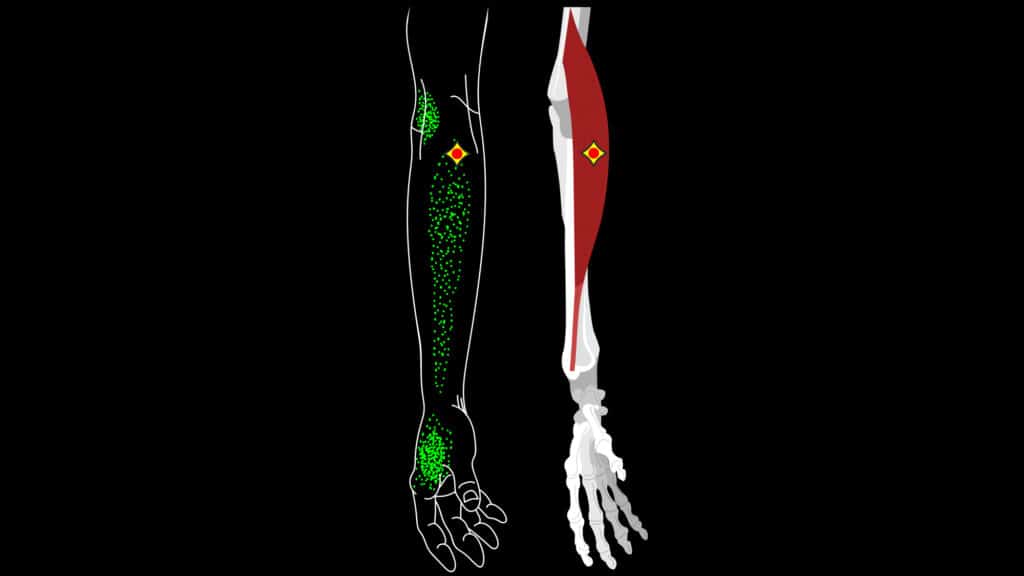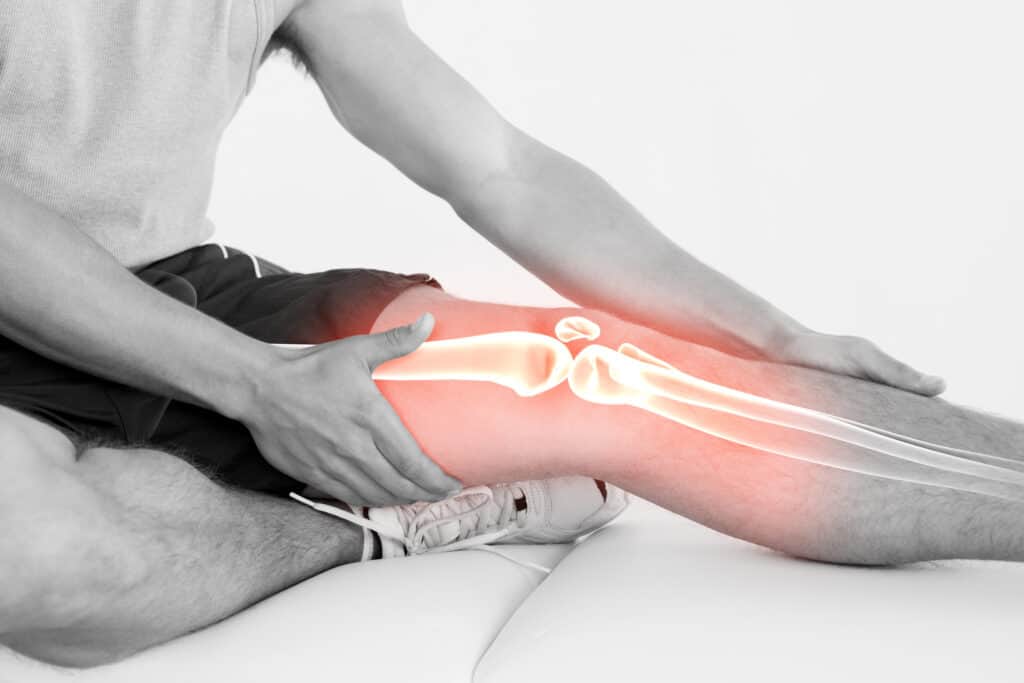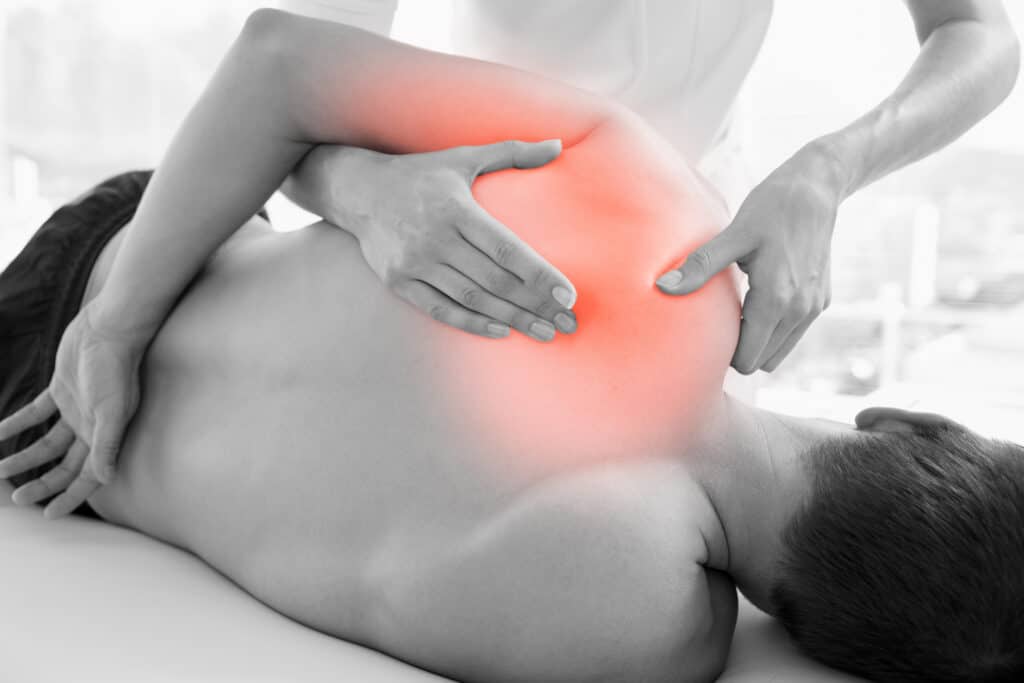
Chances are, you or someone you know may have experienced, or be experiencing, Myofascial Pain Syndrome (MPS). Western medicine characterizes the condition as chronic muscle pain, tenderness, and stiffness caused by muscle trigger points.
You know that feeling when your shoulders are stiff and achy after an unusually long day of staring at your computer screen?
That's the kind of pain people who are told they have myofascial pain syndrome (MPS) deal with every day. It's said to be caused by various factors, like overusing a muscle group or even emotional stress. But the truth is – they don't know.
More Blogs From Release Works
An Introduction to Myofascial Release Therapy (The John F Barnes Method)
Can Myofascial Release Therapy Help With My General Aches And Pains?
The Symptoms Of Myofascial Pain Syndrome Are Always The Same

Patients who have been told they have Myofascial Pain Syndrome usually have a range of widespread and somewhat unpredictable symptoms, ranging from difficulty moving to joint stiffness or migraines. It can be really distressing.
But one of the other significant challenges facing those afflicted with this syndrome is a lack of evidence-based research about its causes, effects, or a cure. It’s really just a catch-all term for pain that doctors can't explain.
But the diagnosis doesn't help suffering at all. In fact, I would argue that it does more harm by convincing patients that they have a “syndrome” – rather than a natural human response to specific types of stimuli, which we can correct.
Myofascial pain is marked by localized tenderness and soreness, often coupled with cramping muscle spasms and the presence of trigger points. Most sufferers also report some degree of physical discomfort or distress when pressure is applied to specific areas around their bodies. You may also have:
If you present at your MD with these symptoms and you're diagnosed with Myofascial Pain Syndrome, you're likely to be sent away with medication or, on rare occasions, offered traditional physical therapy. It can be a real downer.
Examining the History of Myofascial Pain Syndrome

While Myofascial Pain Syndrome is widely known and experienced, little is understood about its history.
However, a closer examination reveals that it was first identified in the 19th century by doctors who recognized specific pain patterns associated with myofascial pain syndrome.
Throughout the years, the slightly vague condition has been the subject of much debate in the medical community – with no real conclusion.
As it is a complex disorder, many different clinical studies have been conducted to better understand its causes, symptoms, and treatments.
One study investigated the effectiveness of trigger point injections, while another explored the benefits of physical therapy and exercise.
Studies have also examined the impact of medication, including nonsteroidal anti-inflammatory drugs (NSAIDs) and muscle relaxants.
But as we know, these medical solutions come with as many (sometimes even more) problems as they solve – in the form of adverse side effects.
Plus, many pain medications doctors are so quick to prescribe often fall short of providing adequate pain relief. They’re not a long-term solution either, especially if you prefer to take a more natural approach to healing your body.
In contrast, Myofascial Release Therapy can and does fix the symptoms doctors associate with this condition and allows you to get on with your life pain-free.
Hopefully, one day in the not-too-distant future, the research for this and other conditions will catch up. But only when they stop trying to create new drugs and focus on methods to support the body's innate healing capacity.
So What Is Causing Myofascial Pain?
Well, it’s likely that it’s not one thing that is causing myofascial pain symptoms.
It’s much more likely to be a collection of things that build up over a long period and combine to push your body out of balance – such as trauma (physical and emotional), repetitive motion injuries, scar tissue, and chronic stress and tension.
All are causing restrictions to form in your fascia. This connective tissue weaves a web of structure and support throughout your entire body.
There may also be intense muscular tension and spasms. That's why listening to and taking care of your body is essential, especially if you perform repetitive movements at work or have a high stress level.
When to See a Specialist - If Your Symptoms Don’t Improve

It's tempting to ignore aches and pains and hope they go away. Some people try all sorts of weird and wonderful remedies they read about online to try and treat their chronic pain.
The symptoms associated with Myofascial Pain Syndrome can undoubtedly be a challenge to manage, but there is hope.
Myofascial Pain: A Guide To Understanding Myofascial Restrictions
For Survivors, Caretakers, and Loved Ones
Without seeing you, it's hard for us to pinpoint the root cause of your symptoms. But our initial advice, if you want to try and improve your symptoms at home, is to start by being mindful of the activities that may be causing it and do your best to avoid or minimize those activities where possible.
We know it’s not always possible. But taking good care of yourself – both mind and body – is one of the keys to managing chronic pain conditions.
Seek advice, connect with others, and talk openly about any pain you're dealing with to learn strategies to help you better manage the symptoms.
However, we need to caveat that advice by saying that when caring for our health, sometimes home remedies just don't cut it.
If you've been trying to get back to health, but your symptoms aren't improving, it may be time to see a pain specialist, like a Myofascial Release Therapist.
With patience, education, support (from a skilled Myofascial Release Therapist), and dedication, you can move toward a brighter future and enjoy a life free from chronic pain. It’s not a life sentence.
How Myofascial Release Therapy Helps With Chronic Pain

If you've tried medications, ice, heat therapy, massage therapy, or even physical therapy- but haven't found relief.
You’re a perfect candidate for Myofascial release therapy (MFR) – to relieve chronic muscle tension, loss of mobility, and pain without needing medication, injections, or surgery.
Myofascial Release Therapy – using the renowned John F Barnes method that we provide - uses gentle sustained pressure on specific areas of your body to stretch and relax tense muscles and connective tissues while promoting better circulation: blood and oxygen flow throughout your body.
It focuses on the connective tissues in your body, called fascia. Fascia is a web of tissue covering, protecting, and connecting your body's organs, muscles, and bones. When these tissues become tight, it can cause pain and limit movement (cue, Myofascial Pain Syndrome).
The Myofascial Release sessions we provide use light pressure and stretching techniques to release this tension in your fascia and promote healing.
By working with your body’s natural healing processes in this way, we help to improve your range of motion, reduce pain and stiffness, and enhance your overall well-being.
It brings a wide range of benefits that can help you with pain, injuries, and other chronic conditions. Some benefits include improving flexibility, reducing muscle tension and spasms, and promoting relaxation.
However, to enjoy all the benefits mentioned above, you must find a skilled Myofascial Release Therapist who is trained in the John F Barnes method of myofascial release.
A straightforward massage therapist claiming to offer "myofascial release" as part of their standard service won't cut it.
What they do is not the same; it certainly won't give you the same long-lasting results. To find out more about how the service we offer is different, you can book a free consultation.

